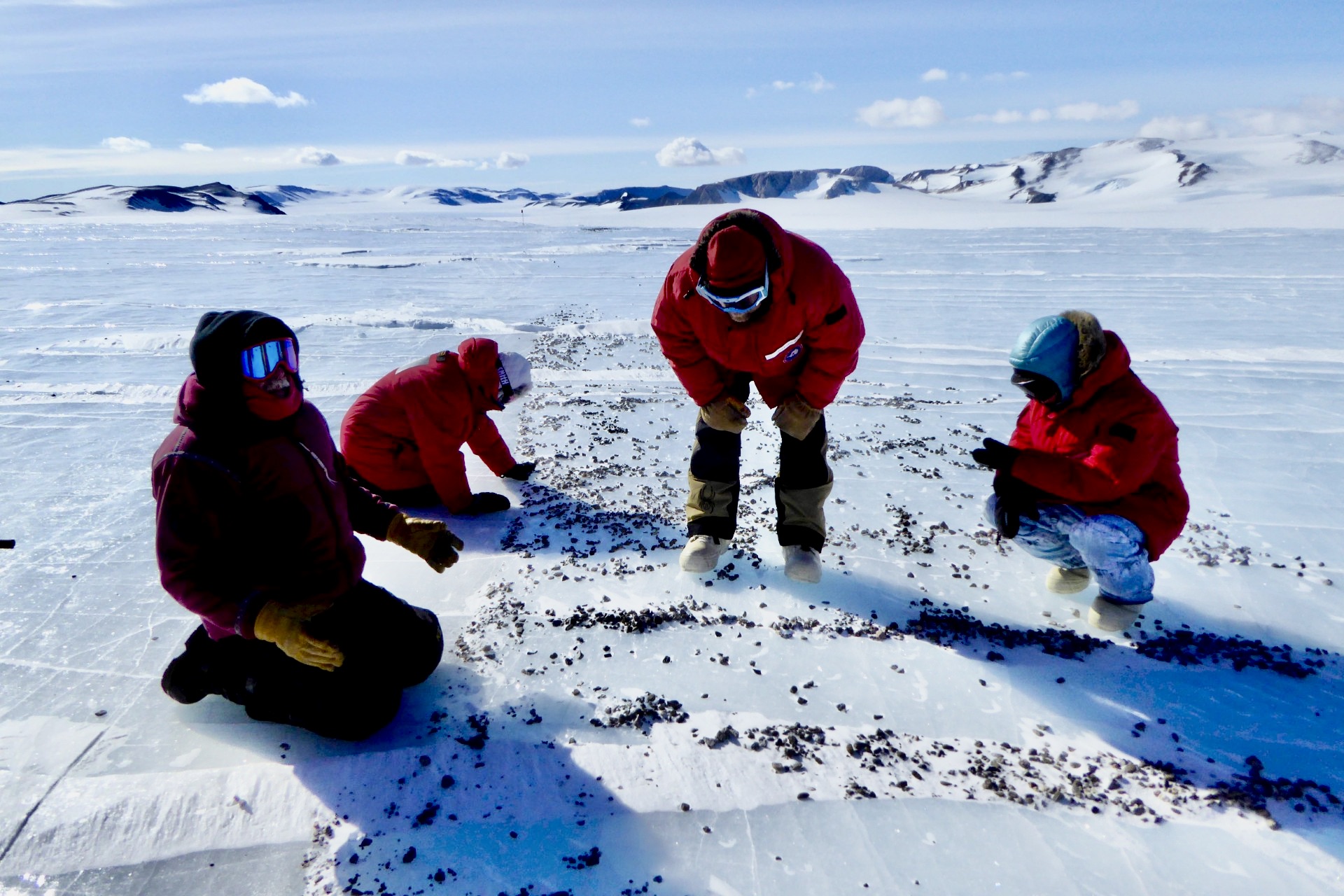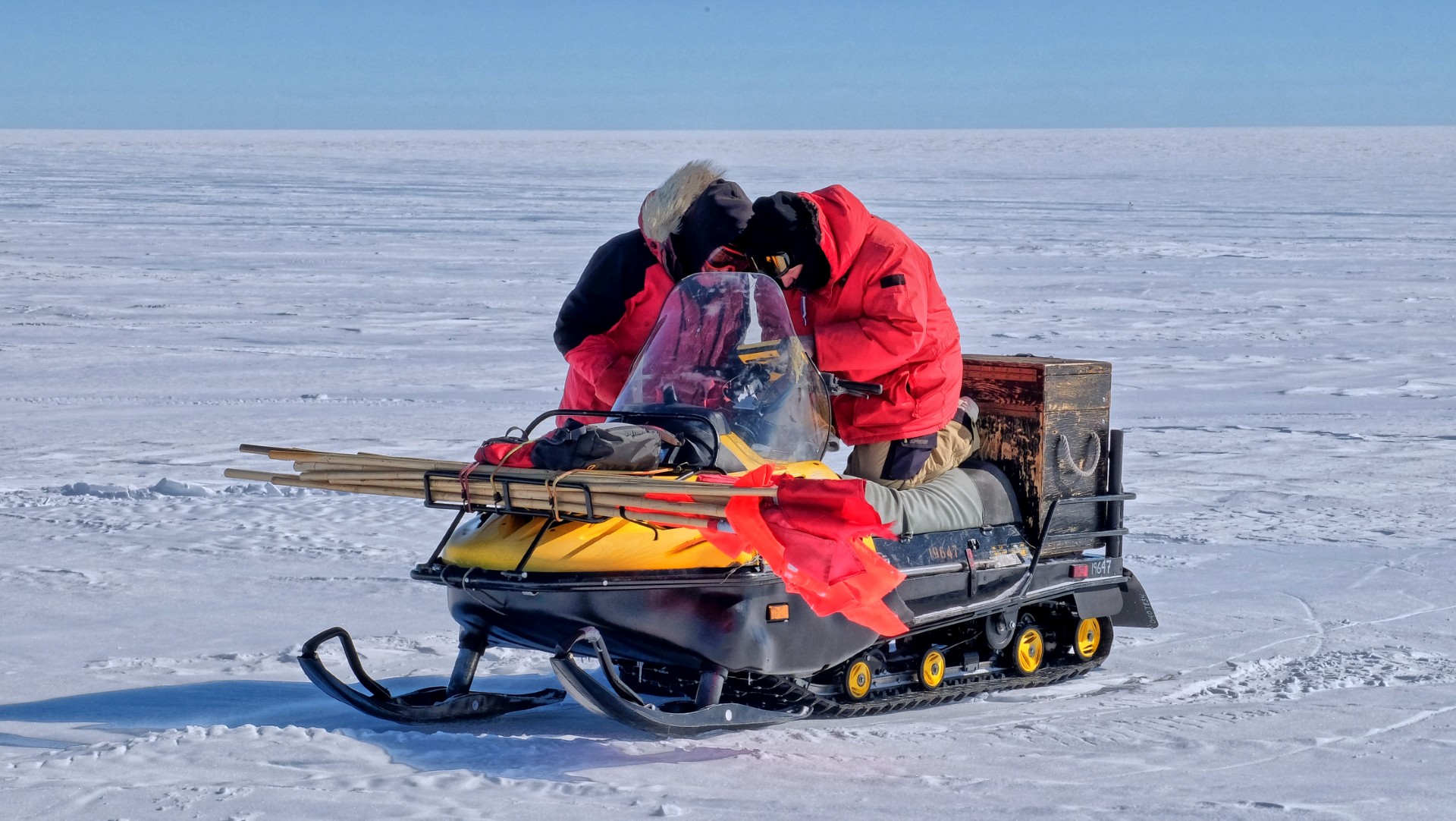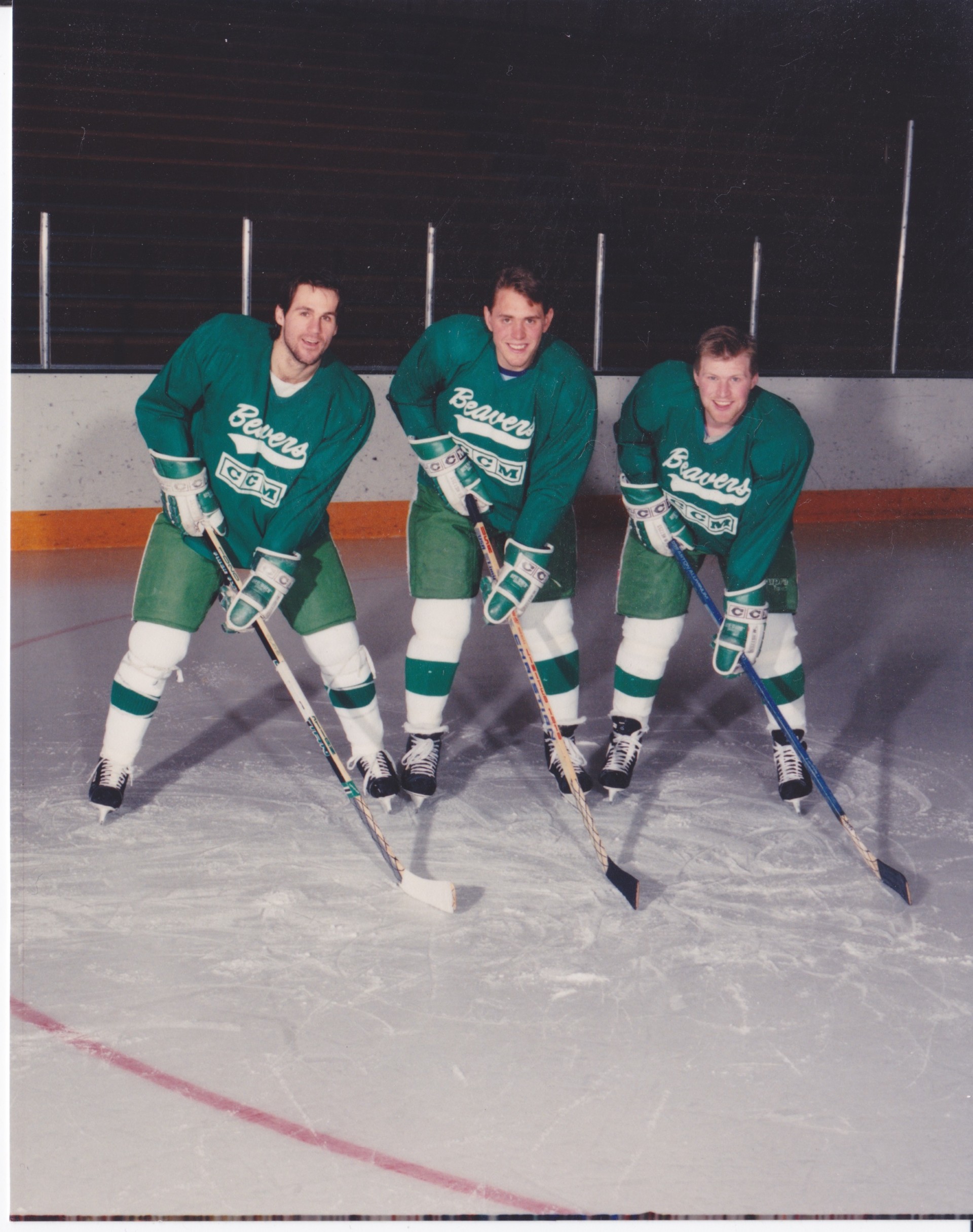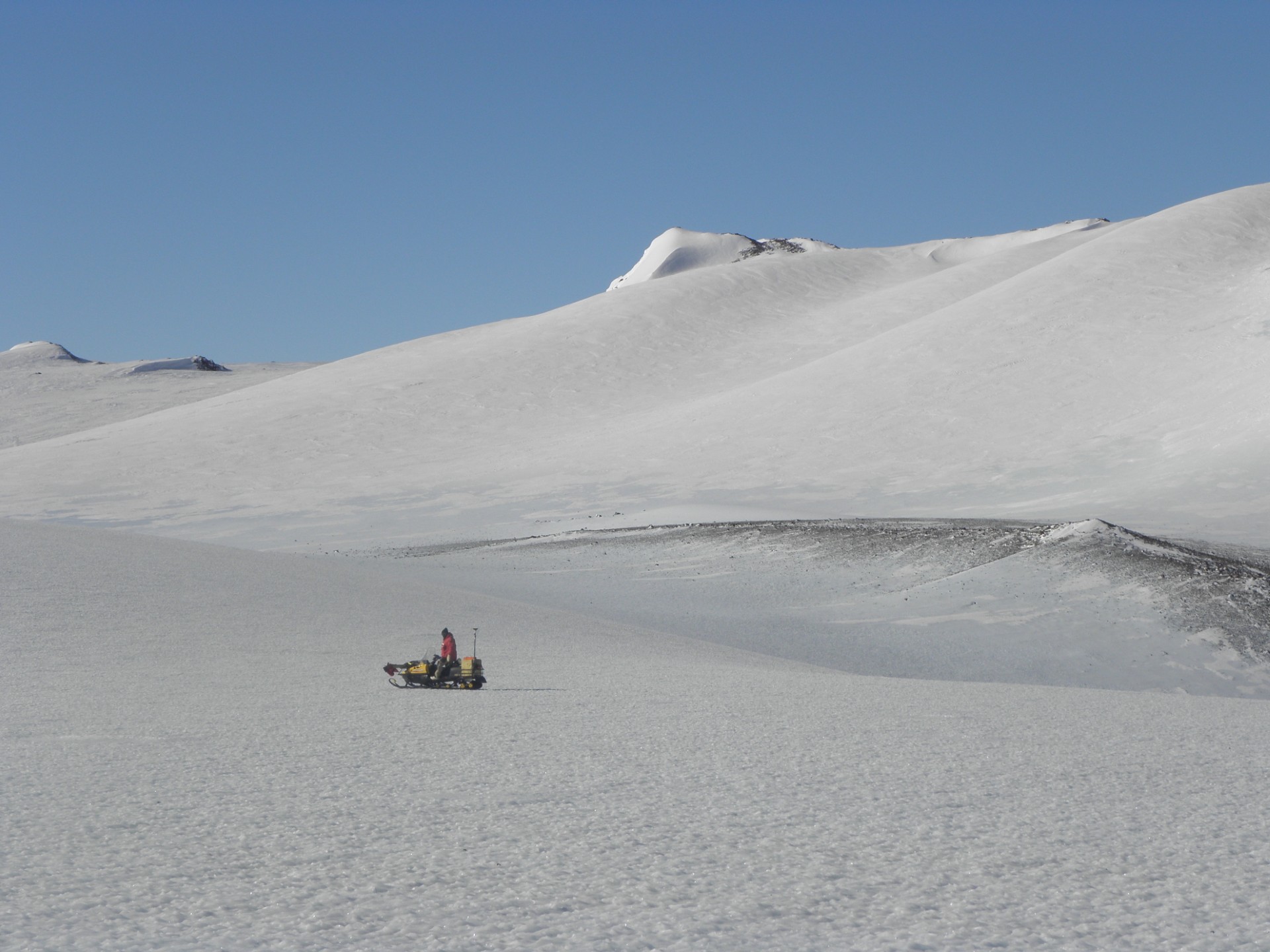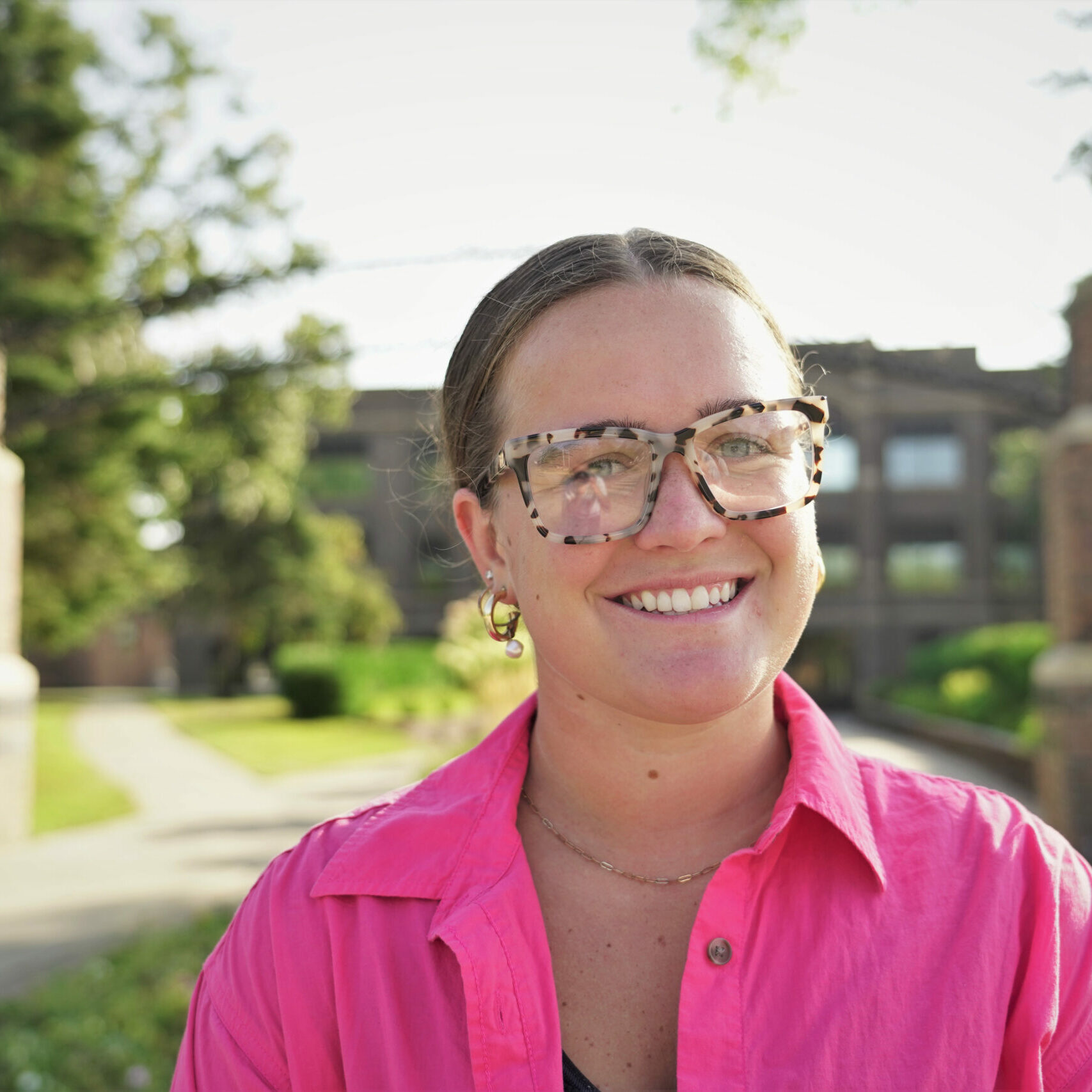
By Stella Dolan
Published 10:11 a.m. on July 24, 2024
Not many Beavers are ever spotted in Antarctica. But Dr. Jim Karner’s groundbreaking advancements in the frozen tundra are certainly hard to miss.
Karner, a 1994 graduate of Bemidji State University, is well-accustomed to cold environments from his days playing college hockey throughout the frigid winters of Bemidji. And ever since, he has seamlessly transitioned his expertise to meteorite research on the icy continent of Antarctica.
“Being from Grand Forks and going to Bemidji State, I think those are a couple of the coldest places in the U.S.,” Karner said. “I grew up playing hockey, so I was used to skating outside, being in the cold, temperatures below zero. I was ready for that, and I had experienced that kind of cold, but a lot of the people on these trips have never experienced cold before.”
In 2009, Karner seized an opportunity to join the Antarctic Search for Meteorites program, a pivotal moment that marked the beginning of his leadership in Antarctic scientific expeditions. Each December, Karner and his team venture by small aircraft into the Transantarctic Mountains in Antarctica, enduring extreme cold and challenging conditions to find meteorites.
“Once we are out in the field, we’re there for five or six weeks. We live in tents and we’re 250 miles away from any type of building or person or anything else,” said Karner. “We search in these spots called blue ice areas where old glacial ice is at the surface. That's where meteorites that have been contained in the ice for hundreds of thousands of years are exposed at the surface.”
One of Karner’s greatest findings occurred during the team’s third visit to this specific field in 2019, when he discovered a small piece of a lunar meteorite. The rock had a glossy black exterior and a distinctive fusion crust. Inside, the rock revealed a composition of black basalt and white anorthosite, similar to the moon’s surface.
Karner knew immediately: “This was a piece of the moon.”
Karner compared the rock to a “miniature full moon.” The rare find not only exemplified Karner’s mastery, but also highlighted the significance of Antarctic expeditions in advancing planetary science.
“There are only a couple hundred pieces of the moon that have ever been found on earth,” Karner said. “It was such a beautiful specimen. I had never seen a lunar meteorite in the field before.”
Northern roots, southern success
Karner’s landmark discovery in Antarctica was the culmination of a journey that largely began at Bemidji State. During his undergraduate years from 1990-94, he was a key member of BSU’s men’s hockey team and contributed to its 1994 national championship. Still today, Karner emphasizes the various life lessons he learned on the ice of the John S. Glas Fieldhouse.
“When you’re from northern Minnesota or North Dakota, you’re instilled with this hard work,” Karner said. “The effort you learn about growing up in the North, it’s what will set you up for success, in any program really, and academics was the same way.”
The values Karner learned at Bemidji State have profoundly influenced his approach to research and leadership, equipping him to confront challenges and inspire others. Now a research professor at the University of Utah, Karner teaches these same lessons to his students. He often emphasizes the enduring impact of his BSU education, advising students to uphold a strong work ethic and consistently “show up.” These principles, ingrained during his time at BSU, have steered Karner’s pursuit of knowledge and exploration throughout his career.
After earning his bachelor’s degree, Karner pursued graduate research at the University of New Mexico, guided by his northern Minnesota connections. His BSU geology professor, John Annexstad – a Walker, Minn., native – was the former associate curator for lunar samples for NASA’s Apollo Space Program who also led the creation of the Antarctic Search for Meteorites program. Annextad introduced Karner to Jim Papike, then the director of the Institute of Meteoritics at the University of New Mexico.
Papike, a former resident of Eveleth, Minn., profoundly influenced Karner's professional career at UNM. Working with Papike and Annexstad provided Karner with invaluable mentorship and opportunities, shaping his expertise in planetary geology and meteorite research.
Bemidji State named Karner an Outstanding Alumni in 2012, recognizing his dedication to planetary geology and Antarctic research. This award honored his significant impact on scientific exploration and commitment to advancing knowledge in his field. Karner considers this recognition, alongside his role as head of the meteorite research program, among his proudest career achievements.
Karner’s experiences serve as a testament to BSU’s role in encouraging ambition and empowering students to pursue their dreams with determination. Karner's transition from Bemidji State’s hockey rinks to the expansive Antarctic ice showcases how his northern resilience and academic background have driven his success, embodying the spirit of a true Beaver pioneering in scientific explorations.
“If you look at people involved in college athletics, especially from BSU, they often find success in life because they learn teamwork and achievement,” Karner said.

KEEP READING:

